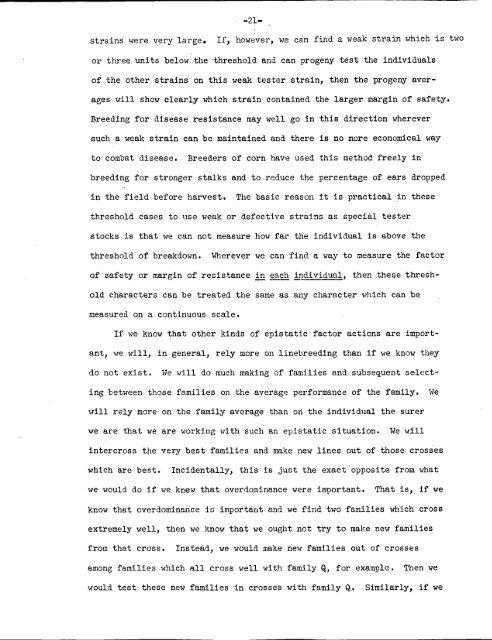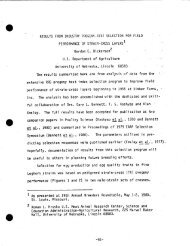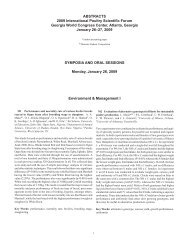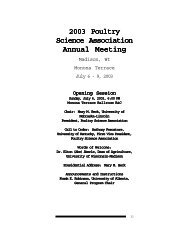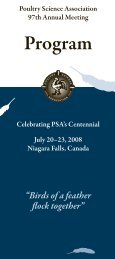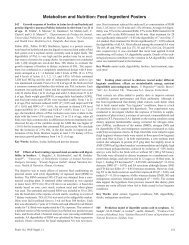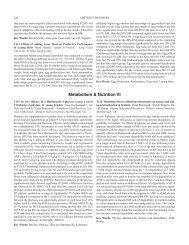Explanation Of Gene Action As Related To Physiological
Explanation Of Gene Action As Related To Physiological
Explanation Of Gene Action As Related To Physiological
Create successful ePaper yourself
Turn your PDF publications into a flip-book with our unique Google optimized e-Paper software.
• -21-<br />
strains were very large. If_ however, we can find a weak strain which is two<br />
or three units below the threshold and can progeny test the individuals<br />
of the other strains on this weak tester strain, then the progeny averages<br />
will show clearly which strain contained the larger margin of safety.<br />
Breeding for disease resistance may well go in this direction wherever<br />
such a weak strain can be maintained and there is no more economical way<br />
to combat disease.<br />
Breeders of corn have used this method freely in<br />
breeding for stronger stalks and to reduce the percentage of ears dropped<br />
in the field before harvest. The basic reason it is practical in these<br />
threshold cases to use weak or defective strains as special tester<br />
stocks is that we can not measure how far the individual is above the<br />
threshold of breakdown.<br />
Wherever we can find a way to measure the factor<br />
of safety or margin of resistance in each individual, then these threshold<br />
characters can be<br />
treated the same as any character which can be<br />
measured on a continuous scale.<br />
If we know that other kinds of epistatic factor actions are important,<br />
we will, in general, rely more on linebreeding than if we know they<br />
do not exist.<br />
We will do much making of families and subsequent selecting<br />
between those families on the average performance of the family. We<br />
will rely more on the family average than on the individual the surer<br />
we are that we are working with such an epistatic situation.<br />
We will<br />
intercross the very best families and make new lines out of those crosses<br />
which are best.<br />
Incidentally, this is just the exact opposite from what<br />
we would do if we knew that overdominance were important.<br />
That is, if we<br />
know that overdominance is important and we find two families which cross<br />
extremely well, then we know that we ought not try to make new families<br />
from that cross.<br />
Instead, we would make new families out of crosses<br />
among families which all cross well with family Q, for example.<br />
Then we<br />
would test these new families in crosses with family Q.<br />
Similarly, if we


